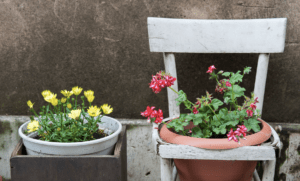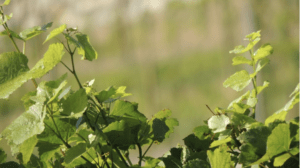
Plant Growing Directions Showing 1–1 of 182 results Default SortingLatestPopularityAverage RatingPrice: Low to HighPrice: High to LowTitle: A to ZTitle: Z to A All Plants Back Herbs Vegetables Fruit Microgreens Flowers Trees Shrubs Supplies Herb Recipes Flowers, Herbs, Plants Mammoth Grey Stripe Sunflower (Helianthus annuus) Fruit, Plants Crimson Sweet Watermelon Plants, Vegetables White Stem Pak Choi Cabbage Herbs, Plants BASIL – Cinnamon Flowers, Herbs, Plants Cosmic Radiance, Cosmophyllos lumina Flowers, Herbs, Plants Zinnia Plants, Vegetables Marketer Cucumber, Cucumis sativus ‘Marketer’ Flowers, Herbs, Plants Milk Thistle, Silybum marianum Flowers, Herbs, Plants, Shrubs Milkweed, belonging to the genus Asclepias Load More End of Content.
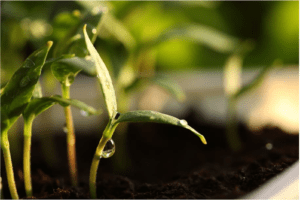
Many annual varieties, like Zinnias, and Sunflowers, have soft shells and can simply be sprinkled on bare soil in the spring. But some perennials, especially native wildflowers, have a hard coating that helps protect the outer shell from breaking and sprouting too early. We’ve all experienced an unseasonably-warm spell in in the middle of January or February — this mechanism helps prevent the seeds from being tricked into coming out of dormancy until it’s just the right time.
The good news for gardeners is that the natural cold stratification needed for germination can be forced with just a few materials, water, a refrigerator, and patience.
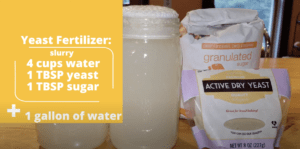
Yeast Fertilizer, an Organic Plant Grower!
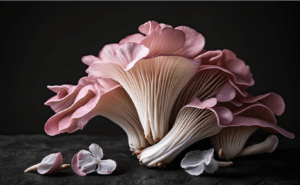
How to Grow Mushrooms Are you fascinated by the idea of growing your own mushrooms? If so, we recommend starting with the oyster mushroom variety — especially pink oyster mushrooms. Growing mushrooms isn’t as difficult as you may have heard. You don’t need a biology degree or any complicated equipment. Everyone can do it! Pink oyster mushrooms taste like bacon and add a touch of color to any dish. Check out this great Farmer’s Almanac article on “How To Grow Delicious Oyster Mushrooms“
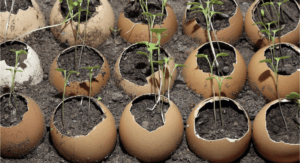
When is the best time to plant seeds? According to Farmer’s Almanac, the below chart is the best time for you to plant specific plants: Seed Where to Start When To Start Artichoke Inside 8-12 weeks before last frost Arugula Outside Early spring Asian greens Outside Early spring Asparagus Inside 12-14 weeks before transplant date Bean, bush Outside Soil temperature 60 degrees Bean, dry Outside Soil temperature 60 degrees Bean, fava Outside As soon as the soil can be worked Bean, fresh shell Outside After last frost date Bean, lima Outside Soil temperature 75 degrees Bean, pole Outside Soil temperature 60 degrees Bean, soy Outside After last frost date Beet Outside Minimum soil temperature 45 degrees Broccoli Inside 3-4 weeks before transplant date Broccoli raab Inside 3-4 weeks before transplant date Brussels sprout Inside In May, ready to transplant in 4-6 weeks Burdock Outside Anytime in spring Cabbage Inside 4-6 weeks before transplant date Chinese Cabbage Inside 3-5 weeks before last frost Cardoon Inside 6-8 weeks before last frost Carrot Outside Minimum soil temperature 40 degrees Cauliflower Inside 4-6 weeks before transplant date Celery Inside 10-12 weeks before transplant date Celeriac Inside 10-12 weeks before transplant date Collards Outside Early spring Corn, broom Outside After last frost date Corn, dent Outside Soil temperature 60 degrees Corn, ornamental Outside Soil temperature 60 degrees Corn, popcorn Outside Soil temperature 60 degrees Corn, sweet Outside Soil temperature 65 degrees Cucumber Inside/Outside 3-4 weeks before transplant date/Soil temperature 70 degrees Eggplant Inside 6-8 weeks before transplant date Endive/Escarole Inside 3-4 weeks before transplant date Gourd Outside Soil temperature 70 degrees Kale Outside Early spring Kohlrabi Outside Early spring Leeks Inside Start February/March for late spring Lettuce Outside As early as possible Melon Inside 4 weeks before transplant date Mustard Outside Early spring Okra Inside/Outside 4-5 weeks before transplant date/Soil temperature 70 degrees Pac choi Outside Early spring Parsnip Outside Early spring Onion Inside/Outside 10-12 weeks before transplant date Pea Outside As soon as soil can be worked Pepper Inside 8 weeks before transplant date Potato Outside Early to midspring Pumpkin Outside Soil temperature 70 degrees Radicchio Inside 3-4 weeks before transplant date Radish Outside As soon as soil can be worked Sorrel Outside Early spring Spinach Outside As soon as soil can be worked Squash, summer Outside Soil temperature 60 degrees Squash, winter Outside Soil temperature 60 degrees Swiss chard Outside As soon as soil can be worked Tomatillo Inside 4-5 weeks before transplant date Tomato Inside 5-6 weeks before transplant date Turnip/Rutabaga Outside Early spring Watermelon Inside/Outside 1 month before transplant date/Soil temperature 70 degrees
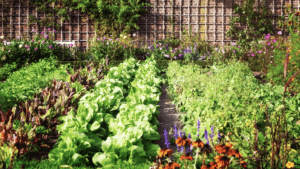
Plant Companions Companion planting is the practice of growing certain plants together in the garden to enhance their growth, reduce pest problems, and increase yields. When planning a fruit and vegetable garden, it is important to choose plants that make good growing companions. Here are some examples: Tomatoes and Basil: Tomatoes and basil are classic companions in the garden. Basil helps repel tomato hornworms and other pests that attack tomatoes, and the tomatoes provide shade for the basil. Cucumbers and Nasturtiums: Nasturtiums are a great companion plant for cucumbers as they repel cucumber beetles and other pests. They also attract beneficial insects like bees and hoverflies to the garden. Beans and Corn: Beans and corn are a classic Native American combination. The beans fix nitrogen in the soil, which helps the corn grow better, and the corn provides support for the beans. Carrots and Onions: Carrots and onions are good companions in the garden. Onions help repel carrot flies, and carrots help repel onion flies. Plus, the two plants have different root depths, so they can be grown together without competing for nutrients. Peppers and Marigolds: Marigolds are known to repel nematodes, which can damage pepper plants. They also attract beneficial insects like ladybugs and lacewings to the garden. Lettuce and Radishes: Lettuce and radishes are a great combination in the garden. Radishes grow quickly and help break up the soil for the lettuce, while the lettuce provides shade for the radishes. By choosing the right plant companions, you can create a healthy and productive garden with less need for chemical pesticides and fertilizers. Farmers Almanac has some great information on ten plants that make great companions. They start their article with this comment, “Companion planting is a great way to maximize the efficiency of your garden. For almost every vegetable you grow, there is likely to be a beneficial companion plant that will help increase soil nutrients, chase away pests, and help you get the most out of your garden. Here are the 10 most popular vegetables grown in the United States and their friends (and foes) in the garden.”
